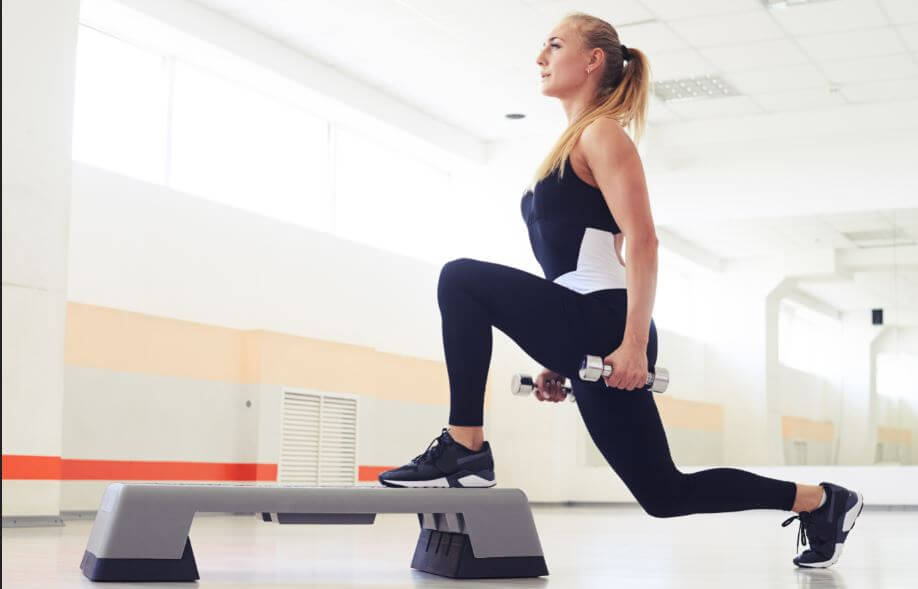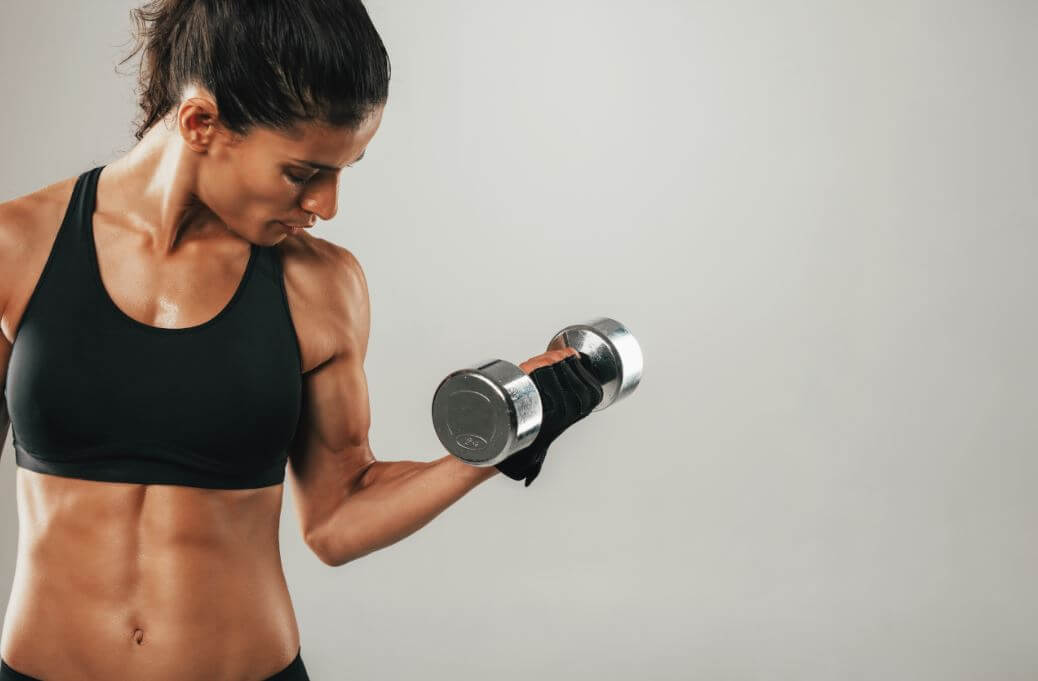Slimming Down with Weights: Can They Give the Results You Want?

While slimming down on your weight loss plan, you might have dropped a few pounds, but after a while, have you noticed that you start to feel tired and weak? To get your body in the best shape possible and score the results you really want, you should include weights in your weight loss workout routine.
How your body uses calories while slimming down
Energy expenditure refers to your body using or burning, the energy that it receives from what you eat and the amount it actually needs to keep running smoothly.
Health professionals measure daily energy expenditure through a standard measurement. Age or life stages– such as being a child, adolescent or adult– influence the final number.

Your body consumes the energy that it needs in order to carry out your daily activities. Keeping that in mind, if your goal is to lose weight, your energy expenditure should be greater than the number of calories you consume.
But, if you’re aiming to gain weight or muscle mass, you’ll need to build your frame by expending less energy than what you’re consuming.
Applying this concept is usually where people make a big mistake. People seeking to lose weight start a weight loss exercise routine but often fail to see results. Their muscle mass also decreases because they don’t make it a priority.
How to use weights to for slimming down
Weight loss professionals recommend that you start with weights before starting cardiovascular workouts. This is because it helps build endurance and gives your muscles more energy for the following exercises.
If you add weights to your routine, you’ll burn more energy, thus positively affect more muscle groups.
Another idea is lifting light weights in a lot of repetitions. By increasing the weight and repetitions slowly over time, you can build your muscle mass.
Both of these ideas will not only help you lose weight but also tone your body, securing a whole body workout, as well.

Tips for slimming down with weights
Theoretically, lifting weights can burn an average of 15 to 20 calories per minute. If you combine that with a balanced diet and quality rest, you’ll find success in your weight loss endeavors. Supervision by a personal trainer is definitely an important part of this entire process.
Keep these following recommendations in mind:
- Becoming familiar with how to use gym equipment is important if you want to work out at a gym.
- Start your workouts by warming up. Warm up for 5 or 10 minutes.
- Stretch the muscle groups that you want to work on during the session.
- Start off with light weights, you should be comfortable with them.
- Follow an appropriate workout routine.
- Establish a workout routine that’ll allow your body and muscles to rest and recover.
Don’t go overboard with weights to shed the weight. Let your body get used to your workout routines and you’ll see results over time. Remember that muscles are heavy. So, find a good muscle mass balance for your body.

Start using weights to slim down and strengthen your muscles
You can combine aerobic and anaerobic exercises to slim down. Remember that by lifting weights, your muscle fibers will grow and require higher energy expenditure.
So, don’t be scared of using weights in your routine to lose weight. Be consistent and don’t focus too much on your weight, but rather, think about your measurements.
Start off with something simple. You could use water bottles, sand filled training weights and work out in a comfortable, easy-to-access area to ease into the new workout routine. Don’t forget that by working out with weights, you’ll also burn fat and build endurance.
While slimming down on your weight loss plan, you might have dropped a few pounds, but after a while, have you noticed that you start to feel tired and weak? To get your body in the best shape possible and score the results you really want, you should include weights in your weight loss workout routine.
How your body uses calories while slimming down
Energy expenditure refers to your body using or burning, the energy that it receives from what you eat and the amount it actually needs to keep running smoothly.
Health professionals measure daily energy expenditure through a standard measurement. Age or life stages– such as being a child, adolescent or adult– influence the final number.

Your body consumes the energy that it needs in order to carry out your daily activities. Keeping that in mind, if your goal is to lose weight, your energy expenditure should be greater than the number of calories you consume.
But, if you’re aiming to gain weight or muscle mass, you’ll need to build your frame by expending less energy than what you’re consuming.
Applying this concept is usually where people make a big mistake. People seeking to lose weight start a weight loss exercise routine but often fail to see results. Their muscle mass also decreases because they don’t make it a priority.
How to use weights to for slimming down
Weight loss professionals recommend that you start with weights before starting cardiovascular workouts. This is because it helps build endurance and gives your muscles more energy for the following exercises.
If you add weights to your routine, you’ll burn more energy, thus positively affect more muscle groups.
Another idea is lifting light weights in a lot of repetitions. By increasing the weight and repetitions slowly over time, you can build your muscle mass.
Both of these ideas will not only help you lose weight but also tone your body, securing a whole body workout, as well.

Tips for slimming down with weights
Theoretically, lifting weights can burn an average of 15 to 20 calories per minute. If you combine that with a balanced diet and quality rest, you’ll find success in your weight loss endeavors. Supervision by a personal trainer is definitely an important part of this entire process.
Keep these following recommendations in mind:
- Becoming familiar with how to use gym equipment is important if you want to work out at a gym.
- Start your workouts by warming up. Warm up for 5 or 10 minutes.
- Stretch the muscle groups that you want to work on during the session.
- Start off with light weights, you should be comfortable with them.
- Follow an appropriate workout routine.
- Establish a workout routine that’ll allow your body and muscles to rest and recover.
Don’t go overboard with weights to shed the weight. Let your body get used to your workout routines and you’ll see results over time. Remember that muscles are heavy. So, find a good muscle mass balance for your body.

Start using weights to slim down and strengthen your muscles
You can combine aerobic and anaerobic exercises to slim down. Remember that by lifting weights, your muscle fibers will grow and require higher energy expenditure.
So, don’t be scared of using weights in your routine to lose weight. Be consistent and don’t focus too much on your weight, but rather, think about your measurements.
Start off with something simple. You could use water bottles, sand filled training weights and work out in a comfortable, easy-to-access area to ease into the new workout routine. Don’t forget that by working out with weights, you’ll also burn fat and build endurance.
This text is provided for informational purposes only and does not replace consultation with a professional. If in doubt, consult your specialist.








